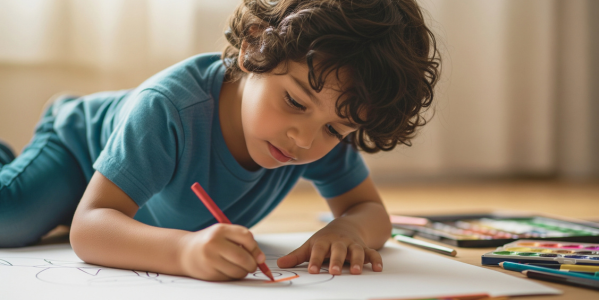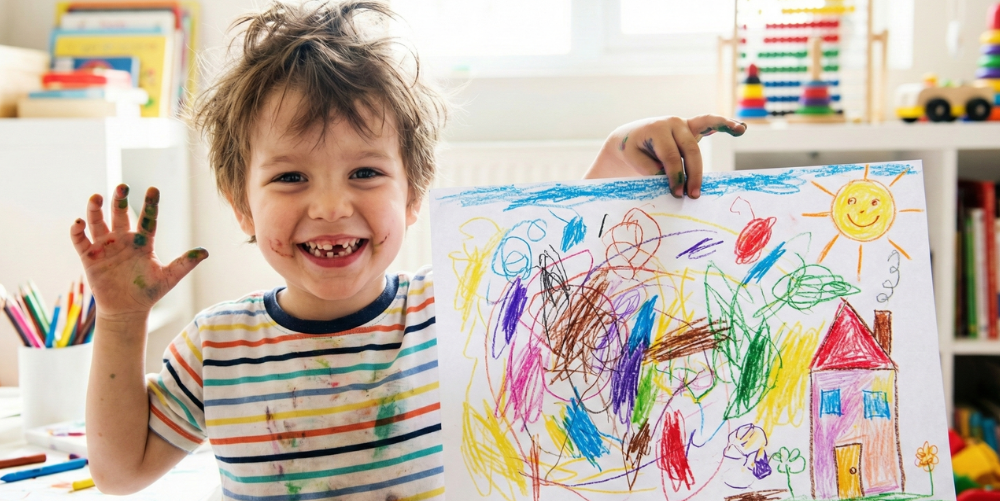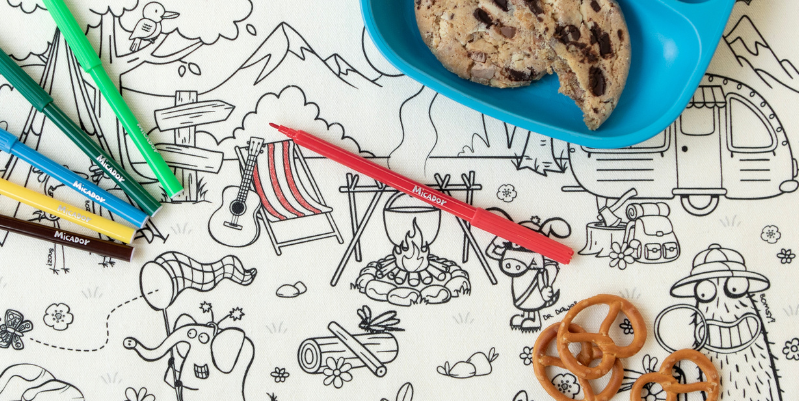Art Therapy at Home: When Kids Need a Creative Outlet
Sometimes kids have big feelings that are too big for words. Maybe they're dealing with friendship dramas, family changes, school stress, or just the general overwhelming-ness of being a small human in a big world. While we can't fix everything with paint and paper, we can give them a safe space to express what they're feeling.
Art therapy at home isn't about creating masterpieces – it's about giving children a way to process emotions and sometimes just have a quiet moment to themselves. And the best part? You don't need to be a qualified art therapist to help your child benefit from creative expression.
Why Art Helps
Art engages a different part of the brain than talking. When kids are overwhelmed, creating something with their hands gives them a way to express feelings they can't put into words, release physical tension, and feel a sense of control when everything else feels chaotic.
Think of it as emotional first aid – not a replacement for professional help when needed, but a valuable tool for everyday emotional wellness.
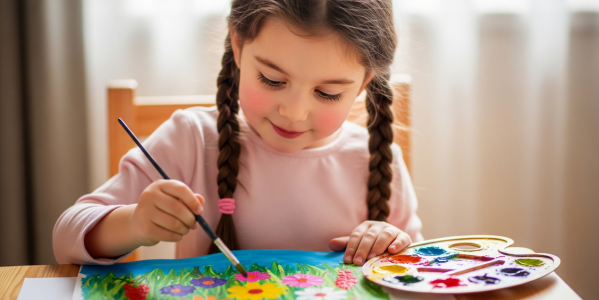
Simple Art Therapy Activities
1. Emotion Colour Mixing
What you'll need: Micador Stylist Watercolours, paper, paintbrushes
Ask your child to choose colours that represent how they're feeling. Let them mix and blend colours on paper however they want. The key is letting them explore colour and movement without any specific outcome in mind.
Why it helps: Colour mixing is naturally calming and meditative. Kids often find it easier to express emotions through colour than through words.
2. Worry Stones Drawing
What you'll need: Micador ColouRush Pencils, paper
Draw simple stone shapes on paper. Ask your child to draw or write their worries on the stones. They can then choose to keep the "worry stones," tear them up, or even bury them in the garden.
Why it helps: Externalising worries makes them feel more manageable. The physical act of drawing them out can be very cathartic.
3. Feelings Journals
What you'll need: A simple notebook, a variety of Micador drawing materials
This becomes their private space to draw, write, or create whenever they need to. No rules, no checking, just their own creative outlet. They might draw their day, create patterns, or even just scribble when they're frustrated.
Why it helps: Having a dedicated emotional outlet gives kids a sense of control and privacy.
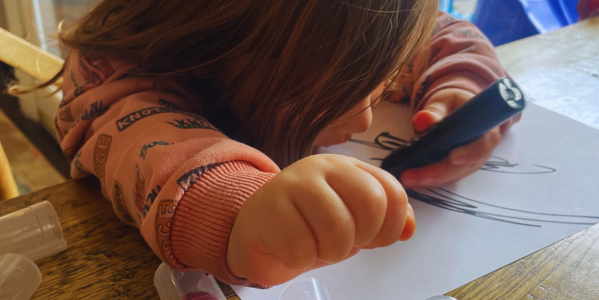
4. Calm-Down Colouring
What you'll need: Colouring pages with repetitive patterns, Micador Colourfun Markers or pencils
Choose colouring pages with mandalas or repetitive designs. The rhythmic action of colouring can be very soothing. This isn't about staying in the lines – it's about the meditative quality of the activity.
Why it helps: The repetitive motion is naturally calming and helps regulate breathing and heart rate.
Creating the Right Environment
Set up a judgment-free zone: There's no "right" way to do these activities. The goal is expression, not perfection.
Make it accessible: Keep supplies easily available. A small basket with basic art materials means kids can reach for creativity when they need it.
Respect their process: Some kids will want to talk about their artwork, others won't. Some will want to keep their creations, others might want to tear them up. All of this is perfectly normal.
When to Try Art Therapy at Home
After a difficult day at school
During family changes (moving house, new siblings, separation)
When they're having trouble sleeping
During friendship difficulties
When they seem overwhelmed
Making It Part of Daily Life
The best thing about art therapy at home is that it doesn't need to be formal or scheduled. Keep some basic supplies accessible, and let your child know they can use them whenever they need to. Sometimes the most therapeutic art happens spontaneously.
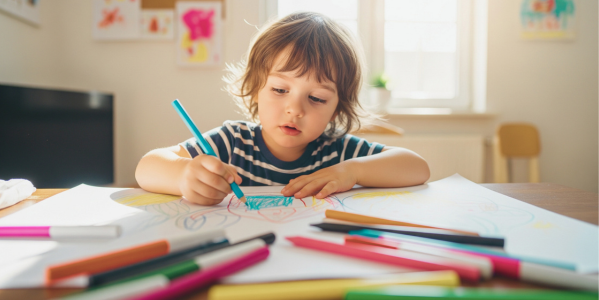
Our art supplies are designed to be safe, reliable, and easy to use, which makes them perfect for therapeutic use. From washable paints that reduce cleanup stress to pencils that feel good in small hands, we've thought about making art accessible for all kinds of emotional needs.
Remember, you don't need to be perfect at this. Sometimes the most helpful thing you can do is simply provide the materials and space, then step back and let them create.
Because every child deserves a safe way to express their big feelings, and sometimes that way is through art.
Happy creating – for hearts and minds.
